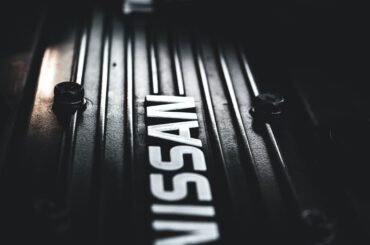One of the alarming situations a driver can encounter while operating a vehicle is when the steering wheel starts spinning freely, devoid of control. This issue, characterized by a loose and uncontrollable steering wheel, demands immediate attention. Addressing the problem promptly is crucial for ensuring the driver’s and others’ safety on the road. This article will explore the causes behind a spinning steering wheel and emphasize the significance of taking swift action to rectify this problem. By understanding the potential underlying issues and their implications, drivers can make informed decisions to ensure their safety and vehicle control.
Contents
Understanding the Steering System
To comprehend why a steering wheel may spin freely, it’s important to have a basic understanding of the steering system and its components. A vehicle’s steering system is responsible for controlling the direction of the wheels, allowing the driver to maneuver the vehicle effectively.
The steering system consists of several key components, including the steering wheel, steering column, power steering system (if equipped), steering rack, tie rods, and steering linkage. Each component facilitates the driver’s control over the vehicle’s direction.
Turning the steering wheel allows the driver to initiate a series of mechanical actions that ultimately steer the wheels.
The steering column links the steering wheel and the steering mechanism. It provides support and transmits the driver’s input to the rest of the steering system.

In vehicles equipped with power steering, a power steering system assists the driver in turning the wheels more easily. It utilizes a hydraulic or electric mechanism to reduce the effort required for steering, enhancing maneuverability.
The steering rack, also known as the rack and pinion, is a critical component responsible for converting the rotational motion of the steering wheel into linear motion. This linear motion moves the tie rods.
The tie rods connect the steering rack to the wheels’ steering knuckles or steering arms. They transmit the motion from the steering rack, allowing the wheels to turn in response to the driver’s input.
Causes of a Spinning Steering Wheel
A. Power Steering Failure:
The power steering system is crucial in assisting the driver with steering effort. When this system fails, it can result in a spinning steering wheel. Some common reasons for power steering failure include low power steering fluid levels, a malfunctioning power steering pump, or a broken power steering belt. Symptoms and signs of power steering failure may include increased steering effort, whining noise when turning the wheel, or a complete loss of power assistance.
B. Broken Steering Column:
The steering column is the vital connection between the steering wheel and the steering mechanism. If the steering column becomes broken or damaged, it can cause the steering wheel to spin freely. Possible causes of a broken steering column may include a collision or impact, wear and tear over time, or a manufacturing defect. Signs indicating a broken steering column include a loose or wobbly steering wheel, difficulty turning the wheel, or unusual noise while steering.
C. Faulty Steering Rack or Tie Rods:
The steering rack and tie rods are essential components of the steering system. The steering rack converts the rotational motion of the steering wheel into linear motion, while the tie rods transmit this motion to the wheels. If the steering rack or tie rods become faulty or worn out, it can result in a spinning steering wheel. Causes of the steering rack or tie rod issues may include improper lubrication, corrosion, or excessive wear. Indications of the faulty steering rack or tie rods include uneven tire wear, a loose or wandering steering feel, or clunking noises while turning.
D. Loose or Broken Steering Linkage:
The steering linkage consists of components such as the pitman arm, idler arm, and connecting rods. It connects the steering gearbox to the wheels and ensures synchronized movement during steering maneuvers. Any part of the steering linkage that becomes loose or broken can cause the steering wheel to spin freely. Reasons for loose or broken steering linkage include worn-out components, improper installation, or excessive play in the system. Signs of compromised steering linkage may include excessive steering wheel play, a lack of responsiveness, or abnormal steering vibrations.
Understanding these potential causes of a spinning steering wheel is crucial for promptly diagnosing and resolving the issue. If you experience a spinning steering wheel, it is recommended to have your vehicle inspected by a qualified mechanic to determine the exact cause and undertake the necessary repairs to restore safe and controlled steering.
Recognizing the Symptoms
Identifying the symptoms associated with a spinning steering wheel is essential for prompt diagnosis and resolution.
1. Freely Spinning Steering Wheel: The most obvious symptom is when the steering wheel feels loose and spins freely without resistance or control. This indicates a significant problem within the steering system.
2. Lack of Steering Response: A spinning steering wheel may be accompanied by a lack of responsiveness when attempting to turn the vehicle. The steering wheel may feel unresponsive or delayed, making it difficult to maneuver the vehicle effectively.
3. Increased Steering Effort: In some cases, a spinning steering wheel may be accompanied by increased steering effort. Turning the wheel becomes more strenuous and requires more physical force, indicating a potential issue with power steering assistance.
Potential dangers and risks associated with the issue:
A spinning steering wheel poses several dangers and risks that drivers should be aware of:
1. Loss of Control: With a spinning steering wheel, the driver loses control over the vehicle’s steering, increasing the risk of accidents or collisions. The inability to steer properly can make it challenging to navigate curves, avoid obstacles, or respond to sudden changes in traffic.
2. Limited Maneuverability: When the steering wheel spins freely, it becomes difficult to make precise steering adjustments. This can hamper the driver’s ability to perform necessary maneuvers, such as lane changes or parking, potentially resulting in unsafe driving situations.
3. Increased Risk of Accidents: The compromised control over the steering system significantly increases the risk of accidents. Without the ability to steer effectively, the driver may be unable to avoid hazards or respond promptly to road conditions, jeopardizing their safety and that of other road users.
4. Potential Mechanical Failures: Ignoring a spinning steering wheel can lead to further damage within the steering system. Continued use with a malfunctioning steering system can result in more severe failures, such as complete loss of steering control or damage to other components.
Given the potential dangers and risks associated with a spinning steering wheel, it is crucial to address the issue promptly. Seeking professional assistance and refraining from driving the vehicle until the problem is resolved are vital steps to ensure the safety of both the driver and others on the road.
Seeking Professional Assistance
When experiencing a spinning steering wheel, seeking professional assistance to diagnose and resolve the issue is crucial. Here’s why professional inspection and repair are important:
1. Expert Diagnosis: Professional mechanics have the expertise and experience to diagnose the underlying cause of a spinning steering wheel accurately. They can assess the steering system components, identify the specific problem, and recommend the appropriate repairs or replacements.

2. Safety and Reliability: Steering systems are intricate and vital for vehicle control. Professional repair ensures that the issue is resolved correctly, maintaining the safety and reliability of the steering system. This reduces the risk of accidents and ensures peace of mind while driving.
3. Proper Equipment and Tools: Professional repair facilities are equipped with specialized tools to effectively diagnose and repair steering system issues. This ensures that the repairs are done accurately and efficiently, minimizing the risk of further damage or complications.
Steps to take when experiencing a spinning steering wheel:
1. Stop Driving: If you notice a spinning steering wheel, it is important to stop driving the vehicle as soon as it is safe. Operating a vehicle with a compromised steering system can lead to further damage and increased safety risks.
2. Assess the Situation: Once safely parked, assess the severity of the issue. Look for any visible signs of damage, such as leaking fluid or broken components. Take note of any additional symptoms or warning lights that may have appeared.
3. Contact a Professional: Contact a qualified mechanic or service center to schedule an inspection and repair. Explain the symptoms and the situation to them, providing as much detail as possible. They can guide the next steps and advise whether it is safe to drive the vehicle to their location or if it requires towing.
Choosing a qualified mechanic or service center:
When selecting a mechanic or service center to address the spinning steering wheel issue, consider the following:
1. Experience and Expertise: Look for professionals with experience in steering system repairs. They should have the knowledge and skills to handle the specific problem effectively.
2. Reputation and Reviews: Check for customer reviews and ratings of the mechanic or service center. Positive feedback and a good reputation are indicators of quality service.
3. Certifications and Training: Ensure that the mechanic or technicians working on your vehicle are certified and have received appropriate training in steering system repairs.
4. Warranty and Guarantees: Inquire about any warranties or guarantees on the repairs performed. This assures that the work is done to a high standard.
By seeking professional assistance promptly and choosing a qualified mechanic or service center, you can ensure that your spinning steering wheel issue is resolved safely and effectively, restoring the control and reliability of your vehicle’s steering system.
Preventive Measures and Maintenance
To prevent the occurrence of a spinning steering wheel and maintain the overall health of the steering system, it is important to follow these preventive measures and perform regular maintenance:
A. Regular maintenance to avoid steering system issues:
Routine maintenance is crucial for keeping the steering system in optimal condition. Adhering to the manufacturer’s recommended maintenance schedule ensures that key components are inspected, lubricated, and adjusted as necessary. Regular maintenance can help identify and address potential issues before they escalate into major problems.
B. Monitoring power steering fluid level and condition:
Power steering fluid plays a vital role in properly functioning the power steering system. Regularly checking the power steering fluid level and condition is important. If the fluid level is low or appears dirty or contaminated, it should be topped up or replaced following the manufacturer’s guidelines. Insufficient or degraded power steering fluid can lead to power steering failure, resulting in a spinning steering wheel.
C. Importance of addressing minor steering system concerns promptly:
Even minor steering system concerns, such as unusual noises, vibrations, or slight abnormalities in steering response, should not be ignored. These can be early warning signs of potential issues within the steering system. Promptly addressing and resolving these concerns can prevent them from developing into more significant problems, minimizing the risk of a spinning steering wheel.
By implementing these preventive measures and performing regular maintenance, drivers can significantly reduce the likelihood of encountering a spinning steering wheel. Proactive care and timely attention to minor concerns can help ensure a safer and more reliable driving experience.
Conclusion
Maintaining a safe and controlled driving experience involves properly caring for the steering system. By implementing regular maintenance practices, monitoring power steering fluid, and promptly addressing minor concerns, drivers can mitigate the risk of a spinning steering wheel and ensure the overall health of their steering system.
Following the manufacturer’s guidelines, regular maintenance helps prevent steering system issues by keeping components in optimal condition. By adhering to routine inspections and servicing, drivers can identify and resolve potential problems before they escalate into more severe issues.

Monitoring the power steering fluid level and condition is essential. Low or contaminated fluid levels can compromise the power steering system’s functionality, potentially leading to a spinning steering wheel. Regularly checking and replenishing or replacing the power steering fluid helps maintain proper system operation.
Equally important is the timely addressing of minor steering system concerns. Unusual noises, vibrations, or slight abnormalities in steering response should not be ignored. These can be early indicators of underlying issues. By promptly addressing and resolving these concerns, drivers can prevent them from progressing into more significant problems that may result in a spinning steering wheel.
More Posts :
Crucial Steps to Prevent Brake Pad Detachment for Unparalleled Safety in 2023






